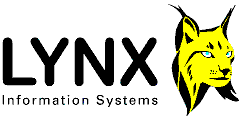Lynx are pleased to announce the long-awaited release of the Iraq Petroleum Systems multi-client study, carried out in association with David Boote Consulting and Integrated Geochemical Interpretation.
The project is built with ArcGIS at the core, so that all of the 250+ maps are not just static they are made up of dynamic feature classes that are stored in a spatially-related geodatabase, this enables end-users to manipulate and adapt maps to fit with proprietary data and geological models. The ArcGIS project has been designed to work as a library of datasets, from maps to a cross-sections, data tables to geochmical cross-plots; enabling knowledge to be drawn out to fit the explorationists’ needs.
David Boote has refined the regional stratigraphic interpretation and has generated 50+ cross-sections showing lithostratigraphy, chronostratigraphy, as well as more general basin evolution architectural models. He has also produced over 250 maps made up of palaeogeographic facies maps detailing source, reservoir and seal rock deposition at specific time intervals.
At Integrated Geochemical Interpretation (IGI), the geochemical database has been compiled which contains over 2,100 samples from Iraq, Iran, Jordan, Kuwait, Saudi Arabia, Syria and Turkey. The geochemistry has been used to evaluate the source rocks in terms of hydrocarbon potential and maturity, which have been input into the basin modelling, to evaluate the oils in terms of their genetic families, source maturity and alteration. The principal focus of the modelling was the creation of a robust set of depth horizons. 16 horizons were produced, dated from Silurian through to the present surface elevation, covering the whole of the Iraq study area. Depth control from a significant database of drilled formations tops is implicit in these horizons, with appropriate consideration being given to an important series of published depth maps These horizons form the foundation of the 2.5-D burial history model and, coupled with regional maturity and temperature data, and for the first time, resolve the spatial and temporal variations in heat flow for Iraq, allowing a significant improvement in the prediction of the maturation history of all the key source rock intervals.
10 Petroleum systems have been mapped and evaluated in great detail, and CRS mapping has also been undertaken using Lynx’s new CRS tool designed specifically for use with this project.
Please download a copy of the Technical Prospectus here or contact ben.sayers@lynxinfo.co.uk for further information or to arrange a demonstration.
